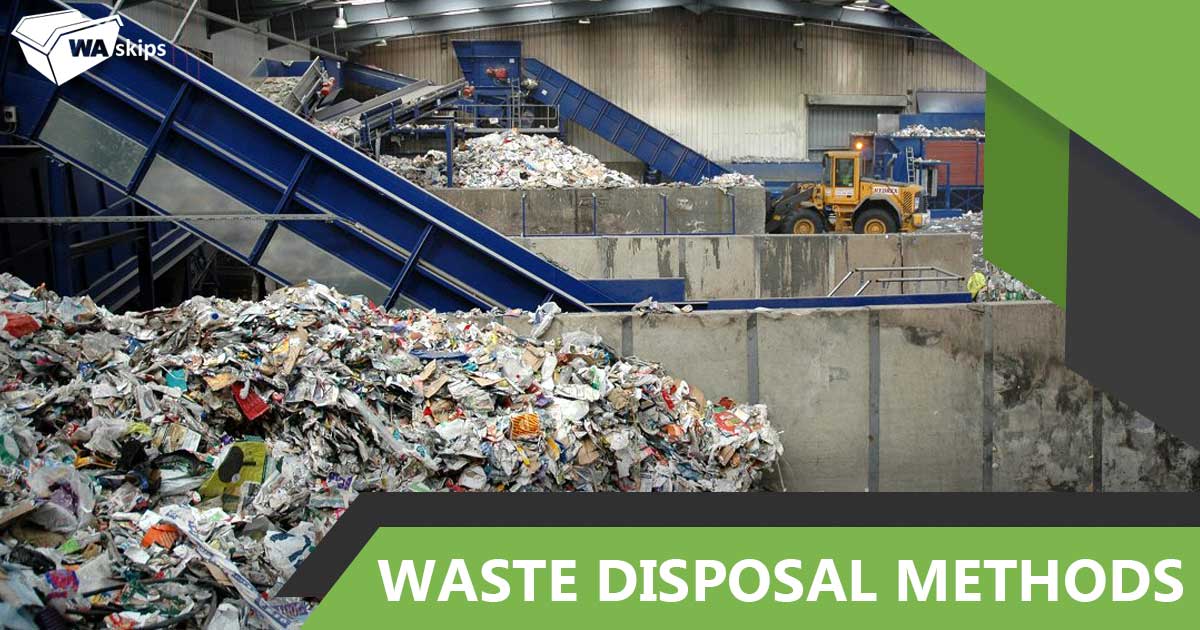
There are a lot of waste disposal methods. Some ways are more high-tech than others. Each of them has different pros/cons. Think efficiency, cost-effectiveness, and environmental friendliness.
To avoid any hassle-filled adjustments to your waste management process, it’s worth knowing the proper disposal methods out there. Here are 5 ways of waste disposal that you should know about:
1. Recycling
Recycling is a lot more cost-effective than landfills now. It’s great for businesses because they can save on the high cost of landfill disposal.
People recycle several different materials and substances. This can produce several items, ranging from cooking oil to plastic bottles. These items are reused or recycled to keep them out of landfills or oceans.
For example, a used plastic bottle can be remade into a new plastic bottle. Thereby lowering the need for new materials and easing our consumption of raw materials. It will also help lower waste.
Recycling helps to protect natural environments from pollution. That’s why it’s more important than ever. Every year around 8 million tonnes of material ends up in rivers and seas. It results in the death of many animals and plants.
Companies who care about the environment love recycling are more sustainable and keep things tidy! It’s one of the most crucial components of improving your business’s waste management plan.
It involves implementing proper waste separation, as well as auditing and disposal processes.
For example, machinery like portable compactors helps make recycling waste easy. These machines are great for making your business easier to operate and simpler for waste management.
2. Composting
Composting as a waste disposal method has been around for centuries. It allows organic waste to be reused as crops and plant fertiliser. This method requires microbes to decompose organic waste.
Organic compost can improve soil fertility. Farmers also get benefits like:
- Decrease the usage of chemical fertilisers.
- Improving crop growth.
- Lessen the risk of soil erosion.
- Shoot up microorganisms in the soil.
- More nutrients for crops.
Even though the composting process is rather slow, it has a lot of advantages. For businesses and organisations that generate tonnes of organic waste, composting makes financial sense.
Rather than let it go to waste, they can turn it into something of great value and then sell it. More revenue stream for them.
3. Landfill
A landfill (also known as a sanitary landfill) is a predetermined waste disposal location. It usually has protective layers to fend off any hazardous liquid waste from leaking into groundwater. These layers are compacted with non-porous soil.
This disposal methodology is pretty outdated. A landfill can become full over time. It’s possible to cause an environmental issue in the future.
Even though a lot of developing countries still use landfill as their main waste disposal resort.
4. Plasma Gasification
Plasma gasification is becoming a common way of dealing with plastic waste. It uses more energy than other waste disposal methods, but it also makes sure that we’re not creating excess amounts of waste in the long run.
To gasify waste material, you first shred it and transfer it to a very hot furnace. Oxygen and steam do the rest of the work. This process leads to about 75-85% vaporisation. And it helps keep the world clean.
The waste, which is a mixture of gases called syngases, gets heated up to 18,000 degrees Fahrenheit inside a furnace. When it’s so hot, the leftover waste separates into its constituent atomic elements.
Whatever is left at the end of the gasification process is made into slag blocks. These blocks can be used in construction projects. Using plasma gasification, it’s possible to come close to achieving a zero-waste policy.
Big countries like the US generates around 250 million tonnes every year. With that number of waste being able to vaporise into reusable items, this method becomes a great deal.
However, this waste disposal methodology still costs a lot of energy. Therefore it’s quite expensive. It’s also not an efficient process. Only a few sites in the world can do this method.
But with technological advancement, we expect shortly the cost will be cheaper and the implementation will be easier.
5. Incineration
Incineration can transform waste into base materials like ash. Through combustion, we can reduce waste volume by more than 90%.
Aside from that, we can also generate power from the heat that it produced. It’s enough to supply power to turbines. We know this as the Waste-to-Energy method.
Some types of ash that are produced by incineration happen to be opulent. Farmers can use them in hydroponic farming
Even so, this waste disposal method is quite controversial. It has a cheaper cost but it can cause a great deal of air pollution. Some waste combuster machines are old and poorly designed. They need large filters to cut pollution.
Nowadays, incineration is considered to be an outdated method. It has disadvantages like producing carbon emissions and endangering the quality of air.
So to support waste management sustainability, it’s better to focus on the greener disposal method. Incineration should be the last resort.

